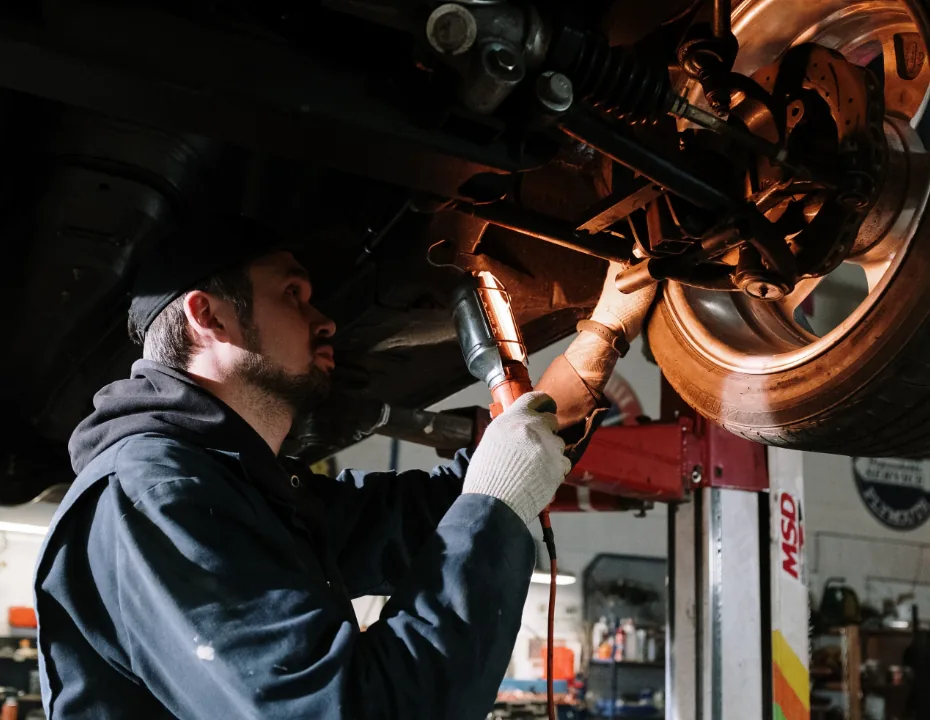Monday to Saturday - 8:00 -17:30

OE vs. Aftermarket Brake Pads: Which Should You Buy?
When it comes to brake pads, B2B buyers—whether you run an auto repair shop, manage a fleet, or distribute automotive parts—face a critical decision: stick with Original Equipment (OE) brake pads or opt for aftermarket alternatives? Both options have distinct advantages and trade-offs, and the right choice depends on your specific business needs, customer expectations, and operational goals. Let’s break down the key differences to help you make an informed decision.
What Are OE Brake Pads?
OE brake pads are Original Equipment components, manufactured by suppliers handpicked by vehicle manufacturers (OEMs) like Toyota, Ford, or Mercedes-Benz. These pads are engineered to match the exact specifications, performance requirements, and safety standards of a specific vehicle model. OE pads are what roll off the assembly line with new cars, designed to deliver the “factory feel” and reliability OEMs promise to their customers.
What Are Aftermarket Brake Pads?
Aftermarket brake pads, on the other hand, are produced by third-party manufacturers independent of vehicle OEMs. They’re designed to fit a wide range of makes and models, often at a lower price point than OE options. The aftermarket segment is diverse: some pads aim to replicate OE performance at a discount, while others are engineered for enhanced durability, high-temperature resistance, or specialized use cases (e.g., heavy-duty fleets or performance vehicles).
Key Differences: OE vs. Aftermarket Brake Pads
To choose between OE and aftermarket, let’s compare them across critical factors that matter most to B2B buyers:
1. Quality & Consistency
OE brake pads are held to rigorous quality standards by vehicle manufacturers. OEMs work closely with OE suppliers to test materials, friction formulas, and durability, ensuring every batch meets strict performance criteria. This consistency is a major plus for businesses prioritizing reliability—you can trust OE pads to perform exactly as the vehicle was designed to.
Aftermarket quality, however, varies widely. While top-tier aftermarket brands invest in R&D and testing (some even exceed OE standards), budget-focused options may cut corners on materials or manufacturing. The key here is to partner with reputable aftermarket suppliers that adhere to certifications like ECE R90 (a global safety standard for brake components) or ISO 9001, ensuring consistent quality.
2. Cost & Value
Cost is a primary consideration for B2B operations, and here’s where aftermarket pads often shine. OE pads typically come with a premium price tag, as they include OEM markup and the cost of meeting strict factory specifications. Aftermarket options, by contrast, eliminate OEM-related costs, offering lower upfront prices—sometimes up to 30-50% less than OE.
But value isn’t just about upfront cost. Cheaper aftermarket pads may wear faster, leading to more frequent replacements and higher long-term expenses. High-quality aftermarket pads, though pricier than budget options, often balance cost and durability, delivering better total value over time compared to both OE and low-end alternatives.
3. Fit & Compatibility
OE pads are engineered for perfect fitment on specific vehicle models. They’re designed to work seamlessly with the vehicle’s calipers, rotors, and braking system, minimizing the risk of noise, vibration, or premature wear. For businesses serving customers with newer vehicles or those prioritizing “factory-spec” repairs (e.g., dealerships), OE pads reduce the risk of compatibility issues.
Aftermarket pads, while designed to fit multiple makes and models, require careful selection. Reputable aftermarket brands provide detailed fitment guides and cross-reference tools to ensure compatibility, but improper selection can lead to fit issues. However, many aftermarket suppliers now offer “direct-fit” options that match OE dimensions, making them a reliable choice for most vehicles—especially older models with more standardized braking systems.
4. Performance & Specialization
OE pads are tuned for balanced performance—quiet operation, moderate wear, and consistent stopping power under everyday driving conditions. They’re not designed for extreme use, such as heavy towing, high-speed driving, or frequent stop-and-go in commercial settings.
Aftermarket pads, by contrast, excel in specialization. B2B buyers can find options tailored to specific needs:
- Heavy-duty pads for fleet trucks or delivery vehicles, built with higher friction materials to withstand frequent braking.
- Low-dust pads for luxury or performance-focused customers who prioritize clean wheels.
- High-temperature pads for vehicles operating in hot climates or mountainous terrain, reducing fade risk.
For businesses serving niche markets (e.g., commercial fleets, off-road shops), aftermarket pads offer performance advantages that OE options can’t match.
5. Supply Chain & Availability
OE pad availability is tied to vehicle manufacturers, which can lead to delays—especially for newer or less common models. This can disrupt inventory management for repair shops or distributors relying on timely restocks.
Aftermarket suppliers often have more flexible supply chains, with broader distribution networks and faster turnaround times. They also cater to a wider range of vehicle ages, making it easier to source pads for older or imported models that may no longer have OE support. For B2B buyers prioritizing inventory efficiency and reduced downtime, aftermarket pads offer greater reliability.
Which Should Your Business Choose?
The answer depends on your customer base, operational goals, and value proposition:
- Choose OE if: Your customers demand factory-level consistency (e.g., new car owners, dealership clients), or you need to maintain OEM warranties. OE is also ideal if you prioritize avoiding fitment risks for rare or high-end vehicle models.
- Choose Aftermarket if: You’re focused on cost savings, serving budget-conscious customers, or need specialized performance (e.g., fleet durability, low dust). Opt for premium aftermarket brands with strong certifications to ensure quality.
Tips for Succeeding with Aftermarket Pads
If you lean toward aftermarket, follow these steps to mitigate risks:
- Partner with suppliers that share test data, material specs, and customer reviews.
- Prioritize brands with ECE R90, FMVSS 135, or other global safety certifications.
- Offer tiered options (budget, mid-range, premium) to cater to diverse customer needs.
Final Thoughts
OE and aftermarket brake pads each have their place in the B2B automotive ecosystem. OE delivers unrivaled consistency and fit for factory-focused customers, while aftermarket offers cost flexibility, performance specialization, and supply chain agility.
At [Your Website Name], we curate both OE-grade options and top-tier aftermarket brake pads, backed by rigorous quality checks and expert support. Whether you need to match OEM standards or optimize for value and performance, our team helps you select the right pads to grow your business.
Ready to stock the best brake pads for your customers? Explore our catalog or contact our sales team for personalized recommendations today.
